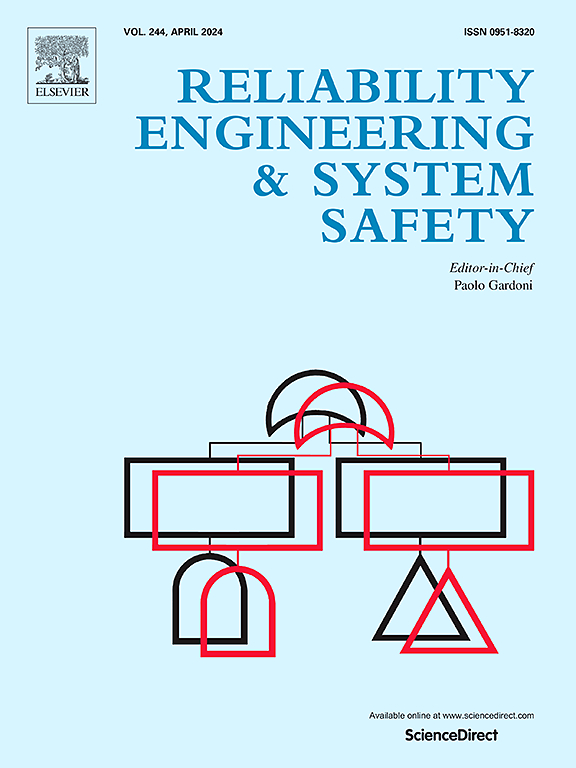Creation of a System Dynamics model of recovery of affected areas after radioactive contamination
IF 9.4
1区 工程技术
Q1 ENGINEERING, INDUSTRIAL
引用次数: 0
Abstract
The presented work focuses on current state-of-the-art in mathematical modeling, specifically addressing atmospheric dispersion, radiation transport, and related issues. Central to this research is the development of a mathematical model designed to support recovery processes following extensive contamination by radionuclides. The model of recovery employs the System Dynamics methodology, recognized for its suitability in addressing complex problems characterized by non-linear behaviors, e.g., radioactive decay. The model is developed utilizing Vensim software. Consequently, the recovery model integrates dosimetry estimates with economic analyses. It forecasts contamination impacts on a variety of objects including buildings, agricultural lands, forests, and transportation infrastructure. To compile the necessary input data for the model, simulations were conducted using specialized codes, i.e., JRODOS and MCNP. Furthermore, empirical data concerning the Czech demographic profile, basic characteristics of buildings, and land-use data were employed. Subsequent to these preparatory steps, the model underwent a comprehensive cost-benefit analysis of relevant countermeasures, adapted to the actual conditions in Czechia. Considering very low atmospheric releases, no substantial decontamination actions would be required. For severe accidents, the results of simulated decontamination corresponded to real-case data obtained from the Fukushima clean-up. The obtained results can be used for decision-making by stakeholders and policymakers.
介绍的工作重点是当前最先进的数学建模技术,特别是大气扩散、辐射传输和相关问题。这项研究的核心是建立一个数学模型,以支持放射性核素大面积污染后的恢复过程。该恢复模型采用了系统动力学方法,该方法因其适用于解决以非线性行为(如放射性衰变)为特征的复杂问题而得到认可。该模型利用 Vensim 软件开发。因此,回收模型将剂量测定估算与经济分析相结合。它可以预测污染对建筑物、农田、森林和交通基础设施等各种物体的影响。为了编制该模型所需的输入数据,使用了专门的代码(即 JRODOS 和 MCNP)进行模拟。此外,还采用了有关捷克人口概况、建筑物基本特征和土地使用数据的经验数据。在这些准备步骤之后,根据捷克的实际情况,对模型进行了相关对策的综合成本效益分析。考虑到极低的大气释放量,不需要采取大量的净化行动。对于严重事故,模拟净化的结果与福岛清理工作中获得的实际数据一致。获得的结果可用于利益相关者和决策者的决策。
本文章由计算机程序翻译,如有差异,请以英文原文为准。
求助全文
约1分钟内获得全文
求助全文
来源期刊

Reliability Engineering & System Safety
管理科学-工程:工业
CiteScore
15.20
自引率
39.50%
发文量
621
审稿时长
67 days
期刊介绍:
Elsevier publishes Reliability Engineering & System Safety in association with the European Safety and Reliability Association and the Safety Engineering and Risk Analysis Division. The international journal is devoted to developing and applying methods to enhance the safety and reliability of complex technological systems, like nuclear power plants, chemical plants, hazardous waste facilities, space systems, offshore and maritime systems, transportation systems, constructed infrastructure, and manufacturing plants. The journal normally publishes only articles that involve the analysis of substantive problems related to the reliability of complex systems or present techniques and/or theoretical results that have a discernable relationship to the solution of such problems. An important aim is to balance academic material and practical applications.
 求助内容:
求助内容: 应助结果提醒方式:
应助结果提醒方式:


